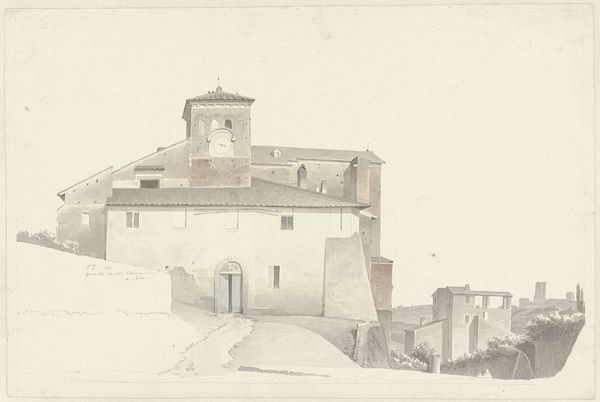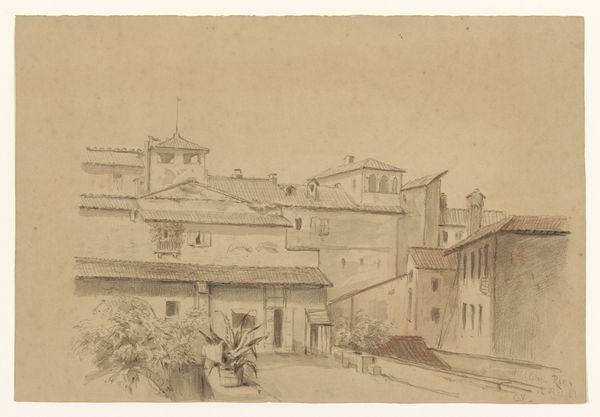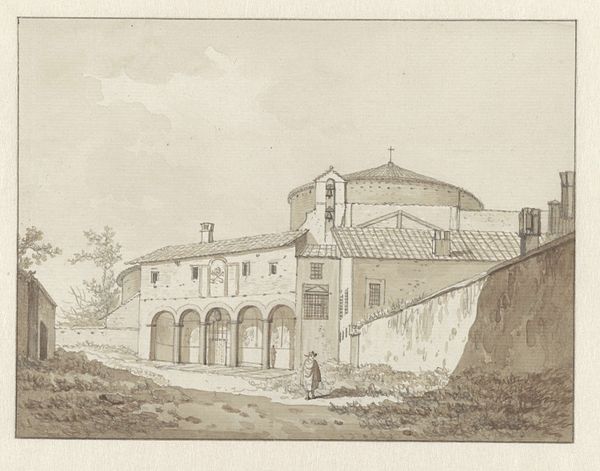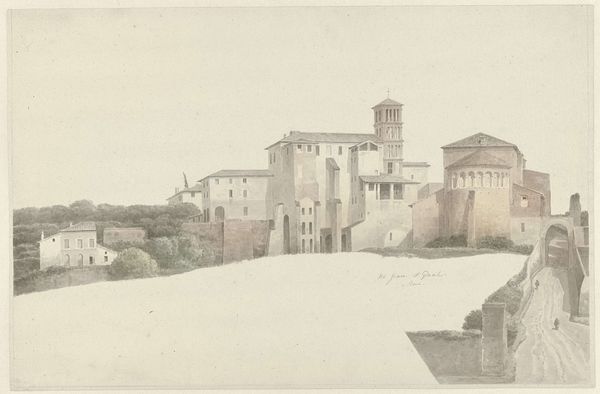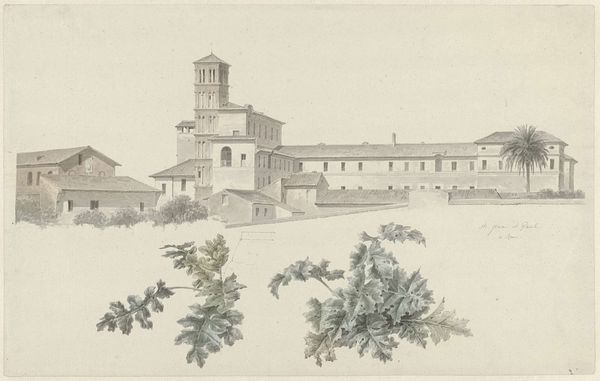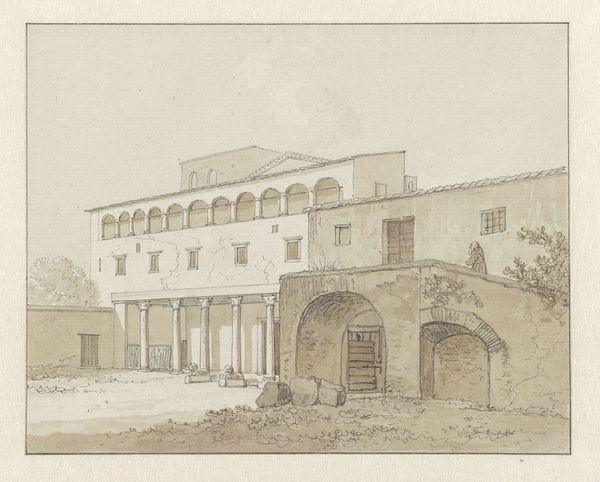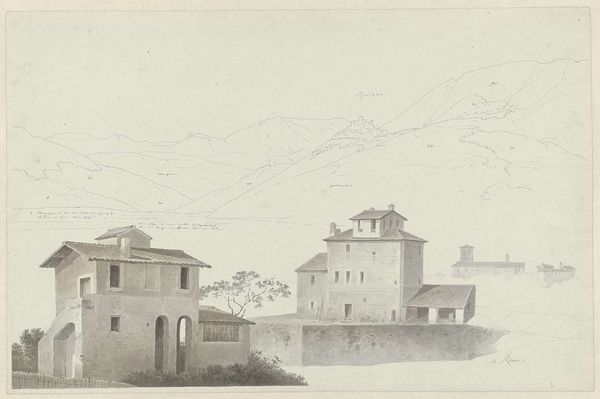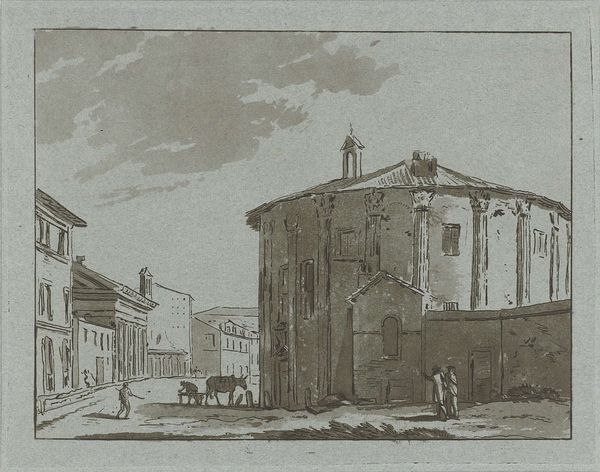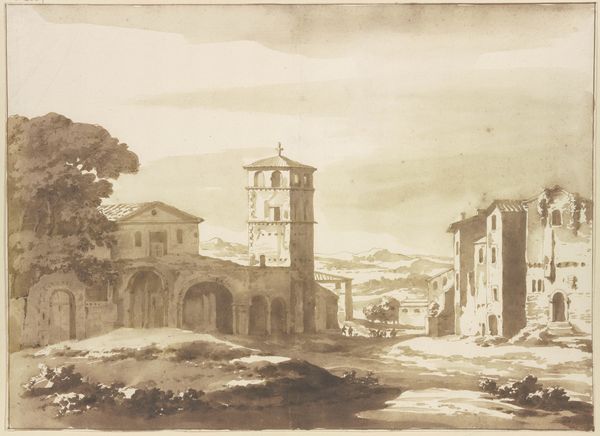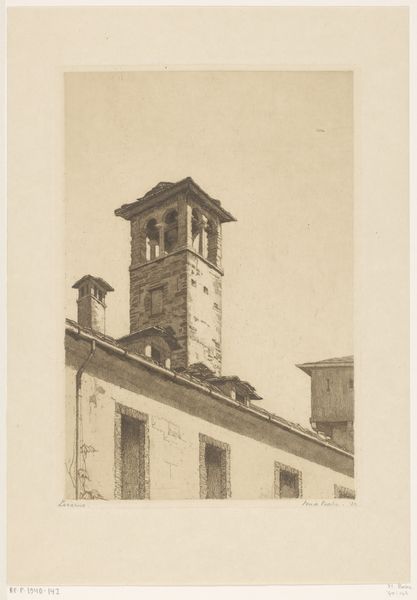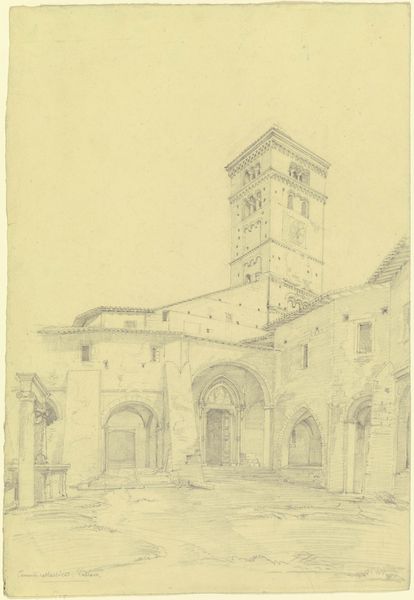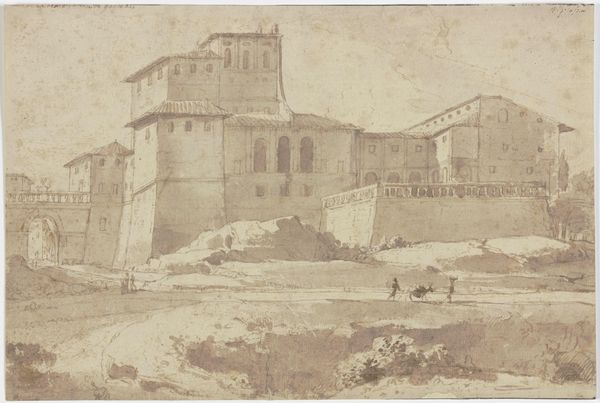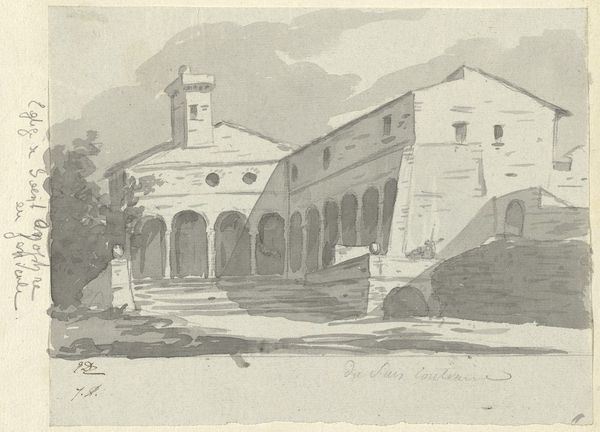
painting, watercolor, architecture
#
neoclacissism
#
painting
#
landscape
#
perspective
#
watercolor
#
architectural drawing
#
architectural proposal
#
cityscape
#
architecture
Dimensions: height 431 mm, width 605 mm
Copyright: Rijks Museum: Open Domain
Editor: Here we have Josephus Augustus Knip’s "Basilica and Monastery of SS. Giovanni e Paolo in Rome," dating from around 1809-1812. It’s rendered in watercolor and captures a cityscape. It's really striking how the buildings loom, yet there's also this delicate, almost faded quality to the light. What’s your take on this piece? Curator: This image speaks volumes about the shifting perception of Rome during the Neoclassical period. The basilica, presented with such stark clarity, reflects a growing interest in historical accuracy and architectural documentation. But look at the way it is situated within the urban landscape; it isn't isolated but integrated into the city’s fabric. Why do you think Knip chose this perspective? Editor: Perhaps he wanted to show the co-existence of the ancient and the modern, the grandeur and the everyday? It’s not just a detached architectural study. Curator: Exactly. The Napoleonic era witnessed an increased investment in Roman heritage as a means of legitimizing power. Consider the role that architectural drawings played then, in documenting and also proposing changes in the urban fabric. What would have been the goal, or effect, on public opinion, when painting that sort of work? Editor: It’s like this artwork isn't just *of* the city but also *for* the city, suggesting potential alterations. Almost like propaganda in plain sight? I hadn't thought about it that way before. Curator: Precisely. And the watercolor medium itself—its delicacy, its portability—allowed for widespread dissemination of these images. So this informs our perspective on how art was produced, circulated, and ultimately consumed. Editor: Wow, seeing it through that lens, it shifts from a simple cityscape to a complex commentary on power, history, and the evolving role of Rome itself. Curator: Absolutely. Understanding the political context deepens our appreciation and brings us closer to Knip’s intentions and the image's public reception.
Comments
rijksmuseum about 2 years ago
⋮
At the left can be seen the porch and part of the façade of the church. It is said to have been built on the site where the house of the patron saints, John and Paul, once stood. The two brothers died as martyrs in the 4th century AD. At centre we see the Romanesque bell tower dating from the mid- 12th century, surrounded by the monastery complex.
Join the conversation
Join millions of artists and users on Artera today and experience the ultimate creative platform.
